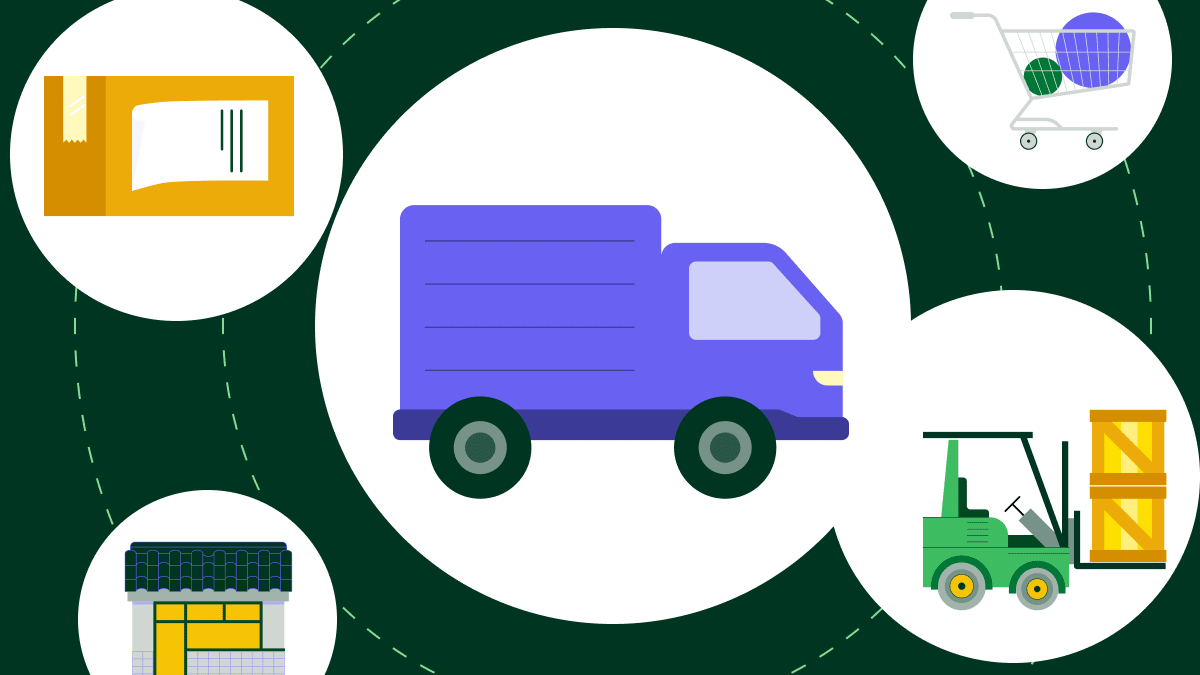A compelling digital marketing strategy needs a persistent source of high-quality content. Creating, organizing and effectively distributing those resources from one place aligns your team and helps searchers find and act on the information they need.
In this article, you’ll learn five steps to create a content hub that attracts and engages more of your target customers.
What is a content hub?
A content hub is a central, organized space on your website where all sales and marketing resources live. Your audience can find content on specific topics or themes all in one place.
A content hub is a strategic tool for small and medium-sized businesses (SMBs). These libraries help build trust by showing expertise and supporting the buyer journey with helpful, relevant resources.
For example, here’s what Pipedrive’s content hub looks like:

The tab includes a variety of resources, from video tutorials to developer documents and downloadable e-books.
Note: You’ll rarely find a section labeled “content hub” in a company’s website menu. Usually, it’s under titles such as “Learning center”, “Guides” or “Resources”.
A content hub can contain information in different formats, like:
Videos
Podcast episodes
Marketing infographics
Webinars
You can organize your hub’s content by audience type, topic, format or funnel stage – whatever best supports your customer journey.
Let’s say you run an HR consulting firm. You work with growing startups that need help with hiring, onboarding processes and compliance.
Your content hub could include:
How-to guides like “How to create an employee handbook”
Templates for onboarding checklists
Short videos explaining labor law changes
Case studies showing how you’ve helped similar companies
Webinar replays on building a strong company culture
A startup founder visiting your hub could get answers to their hiring questions, download a checklist and walk away with more trust in your expertise (all before ever speaking to you).
Benefits of a content hub
A content hub helps you convert visitors into customers. By organizing your knowledge, you make it easier for your audience to find what they need, trust your brand and take the next step.
Instead of constantly chasing new leads with paid ads, you create a long-term asset that attracts and nurtures prospects organically.
Here are five reasons why you need a content hub:
Better user experience (UX). Users find relevant content all in one place. Organized topics make it easier to find what they’re looking for without switching from your blog to YouTube to LinkedIn.
Increased trust. A content marketing hub signals expertise to prospects, enhancing your brand’s credibility and serving as a long-term competitive advantage.
Greater reach. A content hub benefits search engine optimization (SEO) by presenting multiple types of content at once, engaging users for longer.
Longer-lasting content. Unlike social media feeds, a content hub is an owned, permanent digital asset.
A smoother customer journey. A content hub’s variety aids prospects at all customer journey stages, accelerating purchasing.
When your audience can easily find the answers they need, they’re more likely to trust your solution, return for more and convert when the time is right.
How to create a content hub in five steps
You don’t need a huge team or complex tools to build a high-performing content hub. With a clear plan and the right approach, you can start small and scale over time.
Here are five steps to get started.
1. Determine your goals and target audience
A content hub should serve a clear purpose and specific groups of people. This first step helps you anchor everything (from resources to how you organize and measure success) to support business objectives from day one.
When your goals and audience are well-defined, your content becomes more strategic. It speaks directly to the needs of the right people and leads them toward actions that benefit your business, like downloading a lead magnet or booking a sales call.
Let’s say you’re a software-as-a-service (SaaS) company that sells workforce planning software. You aim to drive demo bookings by targeting HR leaders at companies with 200–1,000 employees.
To match that intent, your content hub should focus on addressing headcount forecasting challenges through:
ROI calculators for workforce management
Buyer guides to compare vendors
Articles on agile hiring strategies
Here’s how to plan your content creation efforts:
Clarify your primary business goal. Do you want to generate leads, shorten the sales cycle or support existing customers?
Define your audience personas. Who are they? What roles do they hold? What challenges are they trying to solve?
Map content to audience needs. What is your audience trying to achieve, and how can your content help them?
Set measurable key performance indicators (KPIs). Will you track time on page, bounce rate, downloads, demo requests or traffic from search?
A clear goal and audience profile keep your hub focused and performing optimally.
Better understand your customers with our Buyer Persona Templates
2. Choose the right content hub software
The right software makes creating, managing and scaling your content hub easier. It also ensures your resources are user-friendly and searchable as your content library grows.
Imagine you’re a growing accountancy platform with limited developer support. You need a solution that allows your marketing team to build out pages, tag content by topic or persona and analyze engagement – all without writing code.
In this case, you might choose a content management system (CMS) like WordPress:

The platform’s ease of use and flexibility allow small teams to add and update content without technical help.
Here’s how to choose the right hub software:
Prioritize scalability. Make sure the tool can handle growing content volumes and evolving categories.
Check integration options. Look for platforms with robust APIs so you can connect and sync data across systems seamlessly. It should work well with your customer relationship management (CRM) platform, analytics tools and SEO plug-ins.
Ensure design flexibility. Choose an app that lets you maintain your brand look and create a great UX.
Consider access and approval controls. Ensure clear roles for editors, contributors and reviewers in larger teams.
Make sure it’s affordable. Look for pricing that fits your budget without hidden fees and offers good value as you scale.
The right platform should save time, reduce friction and help your team stay focused on creating content that converts.
3. Audit and organize existing content
A content audit helps you uncover high-performing assets to reuse, outdated pieces to update and gaps worth filling.
Without a proper audit, you risk duplicating efforts or surfacing irrelevant content. Organizing what you have ensures your hub is focused, credible and easy to navigate.
Let’s say you’re an agency with hundreds of blog posts. An audit reveals that:
Several posts on onboarding overlap
Some of your highest-traffic content is buried deep in the site
Key case studies are missing tags
With this insight, you can consolidate similar topics, resurface valuable posts and create a stronger structure.
Here’s how to get started auditing your hub:
Inventory all your content. Use a spreadsheet or content audit tool to log blog posts, guides, videos, case studies, etc.
Assess performance. Look at metrics (e.g., traffic, bounce rate, time on page, backlinks and conversions) to see what’s positively impacting your strategy.
Evaluate relevance. Check whether the content is accurate, up to date and aligned with your target audience’s needs.
Identify themes and categories. Group similar content together to inform your site structure and tagging.
Decide what to keep, update, merge or remove. Make sure everything you include in your hub adds value.
An organized content base helps users find what they need faster, while making your brand feel more credible and trustworthy.
4. Plan a smart content strategy
A thoughtful content strategy defines what you’ll create, how you’ll present it and where each resource fits into the buyer journey.
This plan ensures that everything you publish is purposeful to engage and convert the right people at the right time.
For example, if you’re a marketing agency targeting e-commerce brands, your strategy might include:
Thought leadership blogs to attract search traffic
Video tutorials for engagement
Gated templates to generate leads
You’d also tailor each piece of content to a specific customer journey stage, from brand awareness to decision.

This clarity helps avoid guesswork and ensures your content supports people’s challenges and questions.
Here’s how to shape your strategy:
Outline key themes and content types. Focus on topics that align with your audience’s pain points and business goals (e.g., case studies, explainer videos and interactive tools).
Map content to the buyer journey. Ensure you have a mix of awareness, consideration and decision-stage content.
Design your content structure. Plan how pieces will be grouped (e.g., by topic, industry or format) and interlinked for straightforward navigation and better SEO.
Create a publishing schedule. Maintain consistency by planning what to publish and when with a marketing calendar.
When your strategy is in place, align marketing, sales and product teams so content supports cross-functional goals and becomes a growth engine.
5. Publish and continuously optimize your hub
Search engines and buyers reward fresh, helpful content. Regular optimization keeps your hub aligned with audience needs and business priorities.
Once your content is live, continue to improve what exists, fill content gaps and respond to what your audience engages with most.
Imagine an IT services company that launches a hub with blogs and whitepapers. After tracking analytics, they notice high engagement on cloud migration topics but poor performance on cybersecurity content.
These insights lead them to update articles with video explainers and refined CTAs to “Book a free consultation” (that work in migration topics) and see positive results.
Here’s how to keep your hub performing:
Monitor performance. Use tools like Google Analytics, heatmaps and CRM reports to track what’s working. Use these insights to tweak layouts, headlines, calls to action (CTAs) and internal links.
Refresh existing content. Update articles regularly with new data, visuals or links to keep them relevant. Start with the highest-impact pieces, like landing pages for key topics or resources.
Close content gaps. Look at search queries, user feedback and sales conversations to spot missing topics.
Optimize for SEO. Interlink related pieces, improve meta descriptions and target long-tail keywords to improve rankings and help customers discover you.
Test and improve CTAs. Try new placements, wording or formats to boost conversions.
Refining your content hub over time ensures it continues to attract and engage the right people.
How Pipedrive works alongside your content hub
Pipedrive helps you capture, measure and act on the interest your content hub generates. By tracking interactions, you’ll maximize key opportunities to turn visitors into customers.
For example, you can capture leads directly from your content hub using customizable Web Forms on gated whitepapers, guides or contact pages:

These leads flow straight into your sales pipeline to streamline timely follow-ups.
Setting up workflow automations also means you act instantly when someone downloads a resource or completes a form:

Triggering emails or task reminders ensures you never overlook a potential customer, even when your team is busy.
You can also score leads by tracking how deeply prospects engage with your content (such as time spent on pages or the number of resources viewed) and sync these scores into Pipedrive.
This prioritization helps your sales team focus on the most engaged and ready-to-buy prospects.
Finally, Pipedrive’s real-time reporting ties your content’s performance directly back to deals and conversions:

Understand which blog posts, guides or videos drive pipeline growth within outreach so that you can invest wisely in your content strategy.
Combining your hub with Pipedrive creates a comprehensive system that turns content engagement into actionable sales opportunities – boosting revenue and growing your business efficiently.
Final thoughts
Creating a quality piece of content takes time and effort. Centralizing content management in a hub makes it easier for searchers to find what they need and extend every resource’s impact.
A CRM helps you turn these visitors into loyal customers by tracking, engaging and nurturing leads. Try Pipedrive free for 14 days to make managing your sales pipeline alongside your content strategy simple and effective.







